
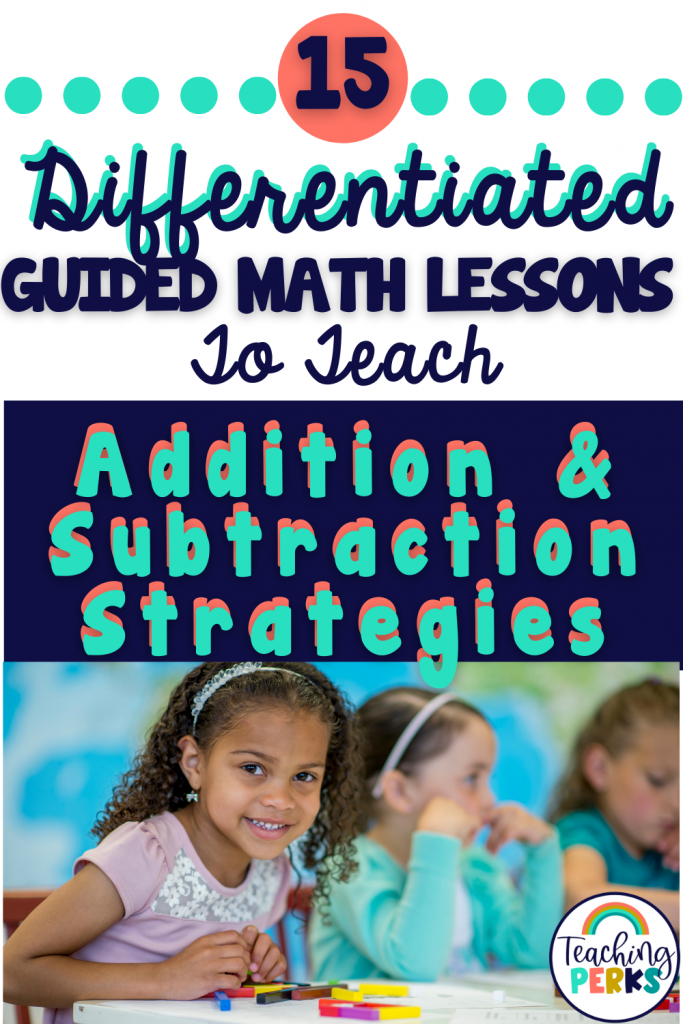
When I first started teaching 1st grade I had no idea what addition and subtraction strategies even were…..I know….sounds bad right?!?! I grew up using touch points or fingers and that’s about it. So my first year teaching I assumed we would use fingers and touch points and they would eventually just get it and learn the facts. I was so wrong, and I have come such a long way since then!
Learning basic addition and subtraction facts in the primary grades is crucial. Knowing these facts will be used in almost every math skill for the remainder of every students’ education. As a first grade teacher, the first thing I cover and make sure students master are the different strategies for addition and subtraction. By learning these different addition and subtraction strategies early on, students are able to use the ones that work best for them on other skills throughout the rest of the year.
What are the Addition and Subtraction Strategies

Strategies for Teaching Addition
There are so many different addition and subtraction strategies for math, and some a little harder than others. Since I teach 1st grade the strategies such as adding 0 or adding 1 have already been taught in kindergarten. I am able to quickly review these simple strategies and then move on to the harder ones. I always start with counting on. This is also learned in kindergarten but this is one of the addition strategies for 1st grade that a lot of students use. Check out a video I made where I go into detail about how I teach counting on in differentiated small groups. Plus in 1st grade students are working with numbers up to 20 so they need the extra practice with larger numbers.
After counting on, I move on to showing them how to use a number bond, tens frame, and a number line or number path. Again, these have been taught in kindergarten but not with the bigger numbers. By the way, if you have not heard of a number path it is the same concept as a number line, just easier for a 1st grader. On a number path the numbers are represented by rectangles that students can count. On a number line students have to count the length units and it is difficult for them to see the units they are counting. I know when my 1st graders try to use a number line, they start with 0 and end up being off by one.
Some other strategies for teaching addition are adding ten, making a ten, doubles and doubles plus one. These are the next on my list to cover.
Strategies for Subtraction
After we have a good grasp on these strategies for addition facts we move on to subtraction. Most subtraction strategies are very similar to a lot of the addition strategies. We started addition with counting on and we start subtraction with counting back. Again, this is the most used strategy I see with my students every year. Next, we begin to subtract with tools such as the number bond and number lines or number path. I also teach my students how to count up to subtract which really helps with fact families later on. We finish up subtraction strategies using what we learned about doubles and doubles plus one as well as subtracting ten.
If students truly mastered the strategies for teaching addition, they usually do pretty well with the subtraction strategies. Keep in mind though that subtraction is always harder than addition for most students.
How to Teach Addition and Subtraction Strategies
There are 15 main strategies for addition and subtraction that I like to use with my 1st graders. Most of those I listed above. I have a system of what really works and that is what I use every year during the first few weeks of school. I ONLY teach math in small groups. Guided math in 1st grade is extremely crucial in my opinion. Teaching math in whole group has never been successful for me. It is impossible for me to see if 20 plus students are mastering the skills I need them to or if they are just writing the number their neighbor wrote and showing it to me. Being in a small group where I am sitting right in front of only 5-6 students is much more beneficial.
Strategies for Addition and Subtraction During Small Group Time
I start small group time by just quickly reviewing a few problems from the skill we worked on the previous day, and then we hit the ground running. We only have 20 minutes, so we move fast and don’t waste time. I first explain what we will be working on that day and then I use my teacher work mat to model for them. Once I have modeled a few examples, the students get their work mats that match my teacher mat and they practice with me. We follow the CPA (concrete-pictorial-abstract) model when working on any math skill. If you are not familiar with the CPA model check out the link at the bottom of this post.
Once the students have seen me model and we have done several examples together they flip over to side 2 of their work mat where they work independently as I monitor. I have a list of mathematical questions that I ask them to be sure they can explain their thinking and that they fully understand what they are doing. ‘
If you are thinking of trying out guided math in your 1st grade classroom then check out my 3 tips for running guided math groups successfully.
Addition and Subtraction Strategies for Word Problems
During every lesson I have a set of word problems that the students solve using the strategy we practiced that day. So if we just did a lesson on counting up to subtract they must solve their word problem using that strategy. Word problems, or contextual problems, are something that needs to be worked on all year. I have found that working on a few at the end of small group every day really helps.
We start out at the beginning of the year practicing the easier situation types such as add to and take from. With my higher group we start trying out start and change unknown problems as well. Later in the year we add in the other problem types such as comparing contextual problems.
Games and Challenge Extensions
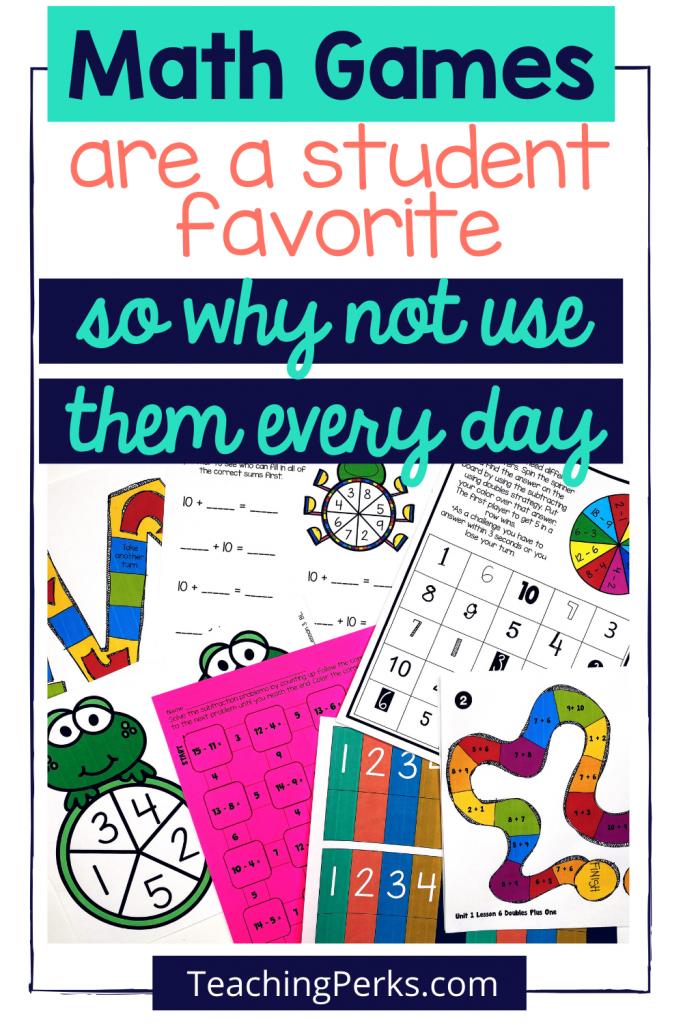
I always have 4 small groups and I meet with them every single day. Each of my groups has between 4-6 students and we meet for 20 minutes. Since I do not have math whole group, it is crucial that I see every student every day. It is also very important that we make the most of our 20 minutes. At the end of our lesson I always like to have games and challenge extensions to pull out and use. Kids love games! We all know that so what better way to end a lesson than with a game.
It never fails though that at least once or twice a week my high group just flies through a lesson in a matter of minutes and we are finished 10 minutes early. On these days I have challenge extensions I use.
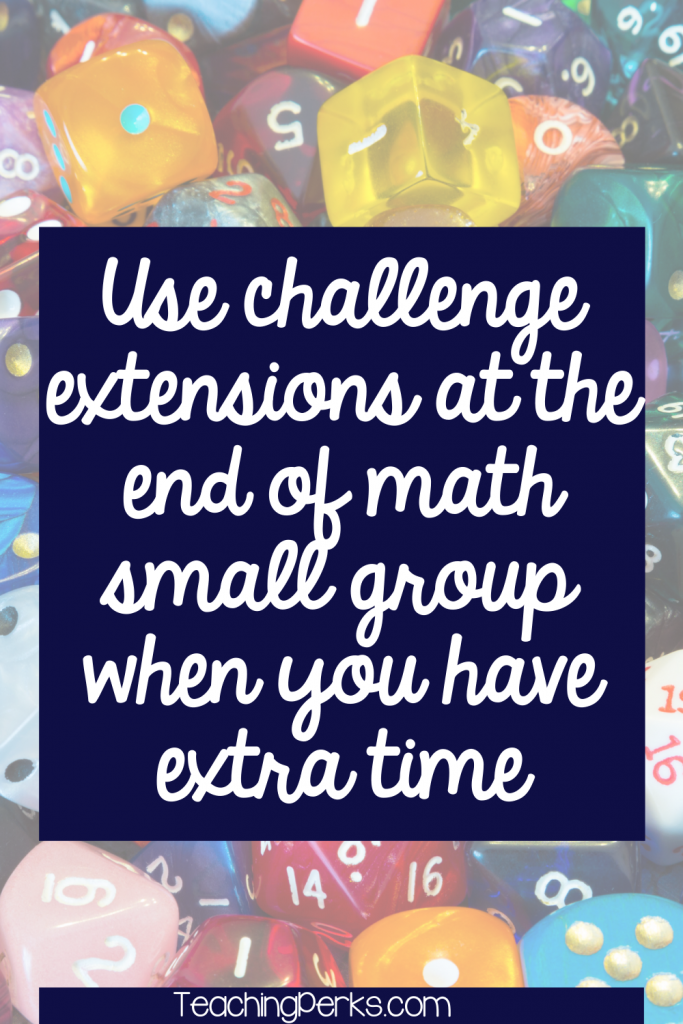
An example of a challenge extension I use is to model a problem and make a mistake on purpose. The students have to figure out the mistake I made and fix it. Another example would be giving students the sum or difference and having students come up with the numbers that could be the addends, minuend, or subtrahend. I make sure I have a challenge extension prepared each day for my small groups.
Independent Practice After Small Group

When students leave my group I like to have them take a page to practice the skill they just learned to complete in their math station. They will complete this on their own and turn it in for their math grade. I like to have them do this as soon as they leave my table so the information is fresh on their brain. I meet with my highest group last so they work on their practice page during their first math station the following day. Sometimes I may switch it up and have them work on this practice page for morning work, homework, later on as a review, etc. Lots of possibilities!
Differentiating These for Addition and Subtraction Strategies
Meeting all of my students in small group gives me the opportunity to differentiate based on their needs. When I meet with each group I do all of the things I mentioned above but on different levels. All of the work mats my groups use are based on their level as well as the numbers we use, independent practice pages, word problems, etc.
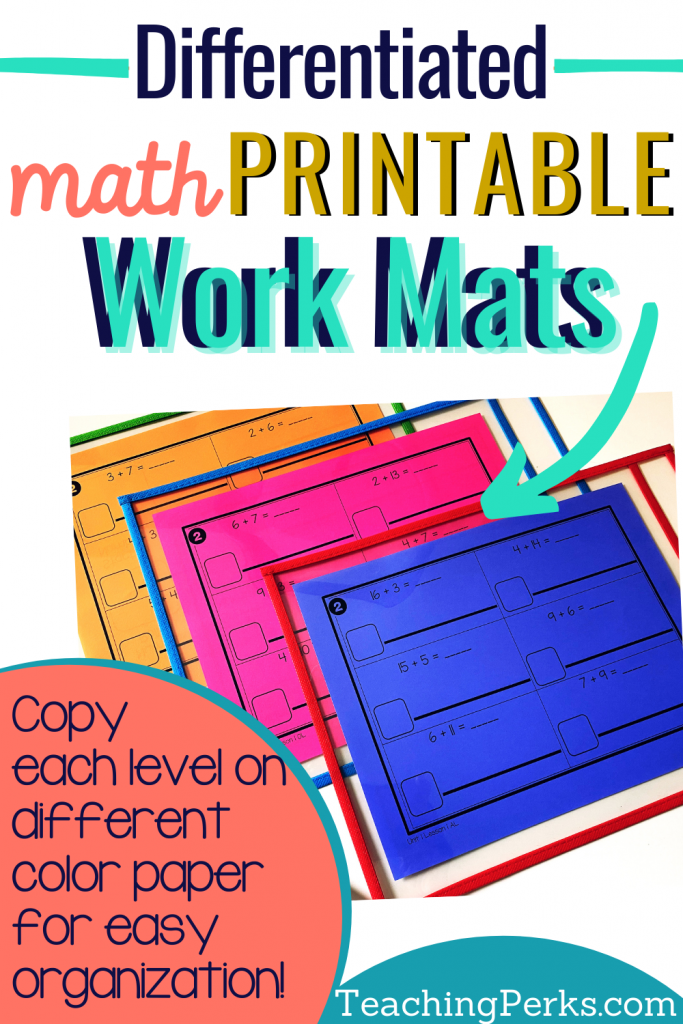
In first grade students will use these strategies and work with numbers up to 20. Since I start teaching these strategies at the very beginning of school, all of my groups are not ready to work with numbers that high. I usually have my below level group begin by working with numbers only up to 5, the on level group will work with numbers up to 15 (or even 10 if they need to) and my highest group will practice with numbers to 20. I do make sure to try and push all levels as close to 20 as I can since that is the standard but what is the point of forcing them if they are not ready.
How To Teach Addition and Subtraction Strategies This Way
I have taught using the methods listed above for years, but I never had an organized set of day to day plans to use. This summer I decided to take everything I had been using and organize it into 15 day by day lessons. Having all of the strategies listed in the order they needed to be taught, as well as the games, work mats, and independent practice pages leveled and copied on different colored paper for each group was a must. I wanted the word problems already typed out and differentiated and the questions I would ask during group planned ahead of time.
Now I have the first 15 days of my math plans ready to go. The best thing is now that I have it all printed I can use it for years to come. The only thing I have to copy each year will be the independent practice pages.
I copy all of my below level materials on orange, on level on purple, and above level on pink. Then I keep each lesson together with the game pieces and cards in a bag labeled with the lesson number. When I am teaching a specific lesson, I pull out everything for that lesson. Being able to grab the pages or cards I need based on what color paper they are copied on is simple with this color coding strategy.
If you want all of the pain taken out of planning each of these components as well as differentiating them for your students then check out my bundle of Strategies for Addition and Subtraction – Differentiated Guided Math Plans.
I know these methods I just discussed may not work for everyone, especially if you don’t teach math small groups. So if you only want the list of what addition and subtraction strategies I teach and the order I teach them in, you can grab that here for free! If you are still wondering if guided math is right for you or why you should use it over whole group math then check this post out.

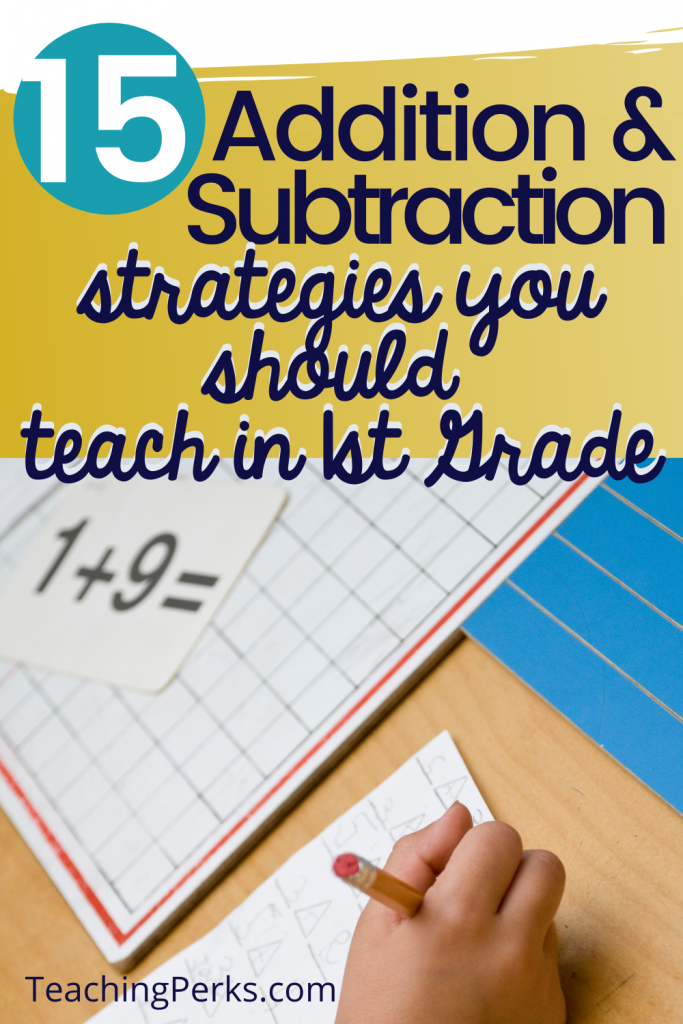
More Information on Addition and Subtraction Strategies
Strategies for Addition and Subtraction – Differentiated Guided Math Plans
You May Also Be Intrested In:
Interactive Read-Alouds…..What They Are, How To Use Them & Why They Are So Important!
Great site with quality based content. You’ve done a remarkable job in discussing. Check out my website YV6 about Airport Transfer and I look forward to seeing more of your great posts.